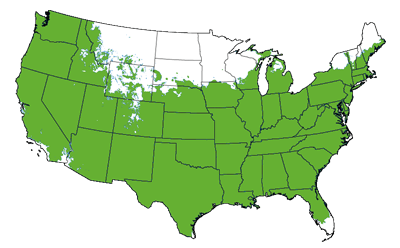McIntosh Apple Tree
Product Details
 Growing Zones 5-9
Growing Zones 5-9
| Soil Type | Well Drained |
| Sunlight | Full |
| Drought Tolerance | Semi |
| Mature Height | 10-15 Feet |
| Mature Width | 6-10 Feet |
| Growth Rate | Moderate |
| Bloom Color | Pink, White |
| Shipping Restriction | AZ, CA, ID, WA |
Enjoy your new McIntosh Apple Tree right away, as this variety often produces heavy amounts of its delicious, vivid red fruit in just one year.
The perfect combination of sweet and tart means McIntosh apples are an excellent choice for making pies, sauce, cider, or simply enjoying straight off the tree.
As an early bloomer, the McIntosh apple tree is not self-pollinating, so we recommend planting it with another tree for best results. Choosing a late-blooming variety such as Fuji, Golden Delicious or Honeycrisp will help extend your harvest season.
The mature dimensions of this tree are up to 15 feet tall and 10 feet wide, making it an ideal size for even smaller yards. Plus, McIntosh are known as hardy trees, able to withstand cold winters, and thrive in nearly every growing zone.
This versatile tree will decorate your landscaping with delicate white and pink blossoms in the spring, before the rich green leaves and ripe fruit appear. Order your McIntosh Apple Tree today to begin enjoying its bountiful, fresh apples as soon as possible.
McIntosh Apple Trees are not self-fertile. You will need to plant another variety to achieve fruiting. Some suggested pollinators to pair it with include Honeycrisp, Fuji, and Golden Delicious.
Planting
Full sun and well-drained soil help your McIntosh Apple thrive, so select an area with both (6 hours of sunlight per day). Now that you have found your ideal planting location for the McIntosh Apple, there are some basic steps for planting the tree. Place your tree, tamp down the soil as you fill the hole to prevent air pockets, and water to settle. Finally, mulch to preserve moisture.
Tip: Make sure your mulch is not touching the base of the trunk.
Watering
Your McIntosh Apple will benefit from a regular watering each week. You may need to water more often in times of extreme heat or drought. The soil surrounding your tree should be moist, but never saturated. If you're not sure when to water, simply check the soil about 2 or 3 inches down - if it's dry here, it's time to water.
Fertilizing
Once your tree has become established and is starting to bear fruit, it will need some periodic, moderate pruning. Only prune the tree during times of dormancy, making sure to remove any vigorous, upright stems. Weak, damaged or dead branches should also be removed.











